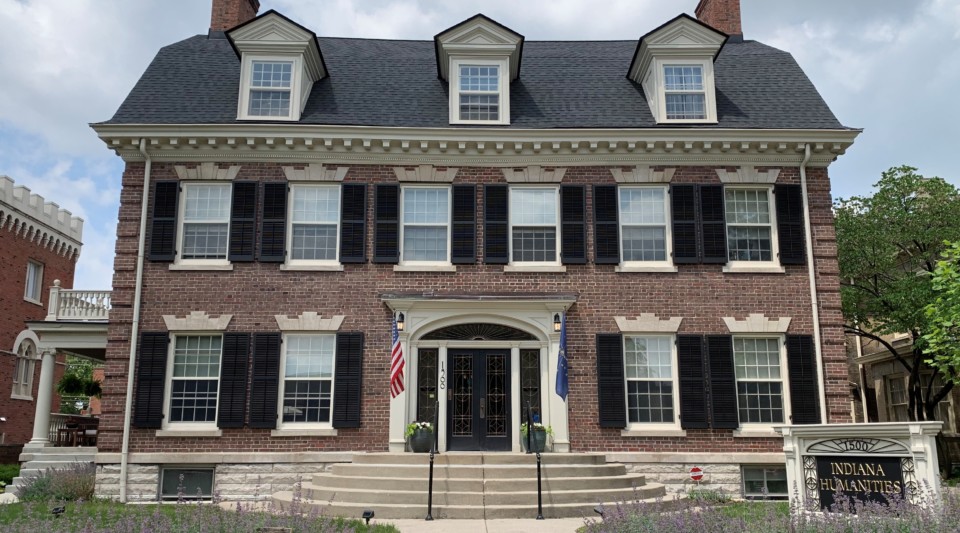
Nicholson House
Since 1986, Indiana Humanities has operated out of the former home of Indiana author Meredith Nicholson and his wife Eugenie at 1500 N. Delaware St. in Indianapolis’s Old Northside neighborhood. The house also serves as the headquarters for the Central Indiana Land Trust and the League of Women Voters of Indiana.
About the House
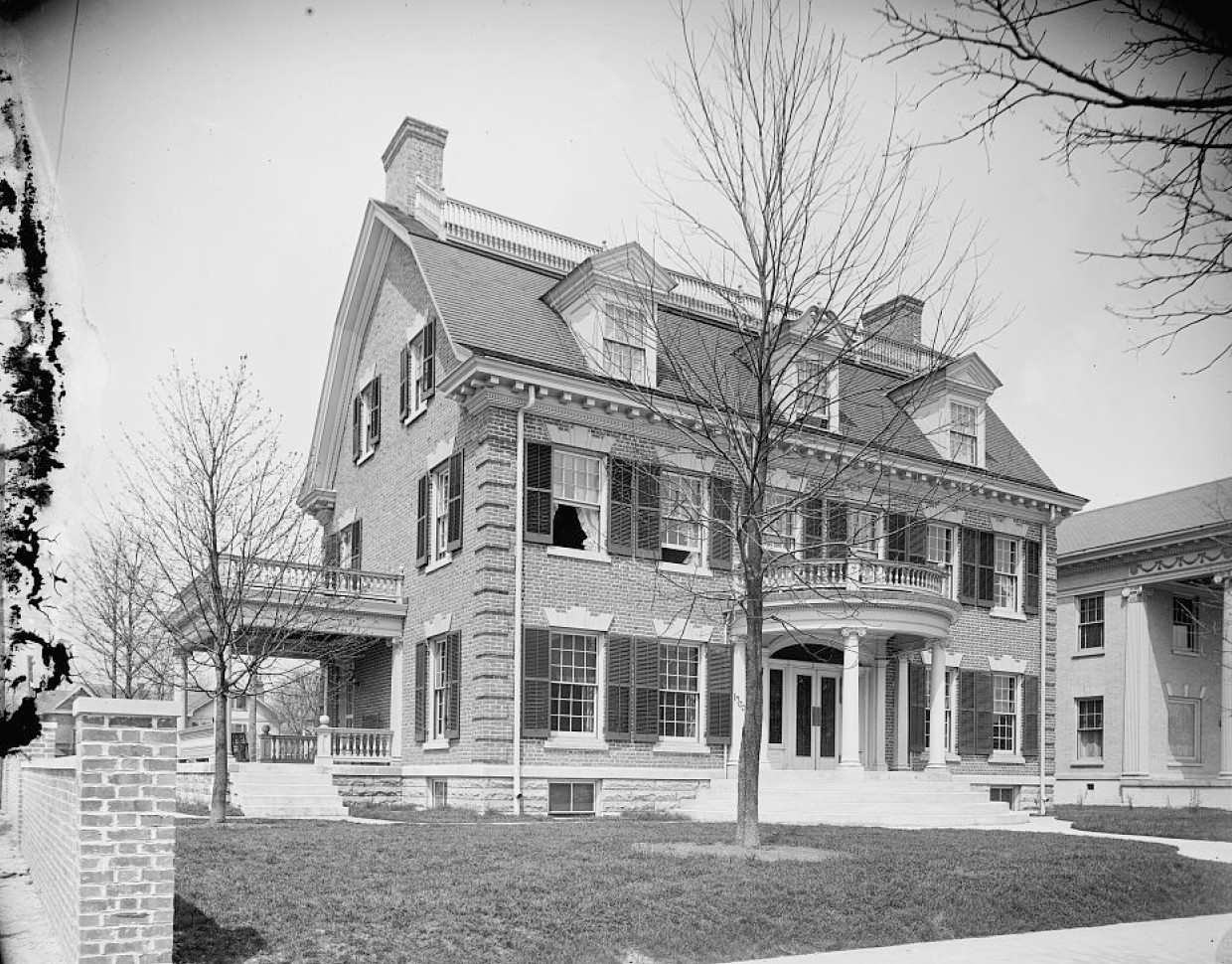
In late 1903, Meredith and Eugenie Nicholson and their children moved into their new home at 1500 N. Delaware St. in Indianapolis.
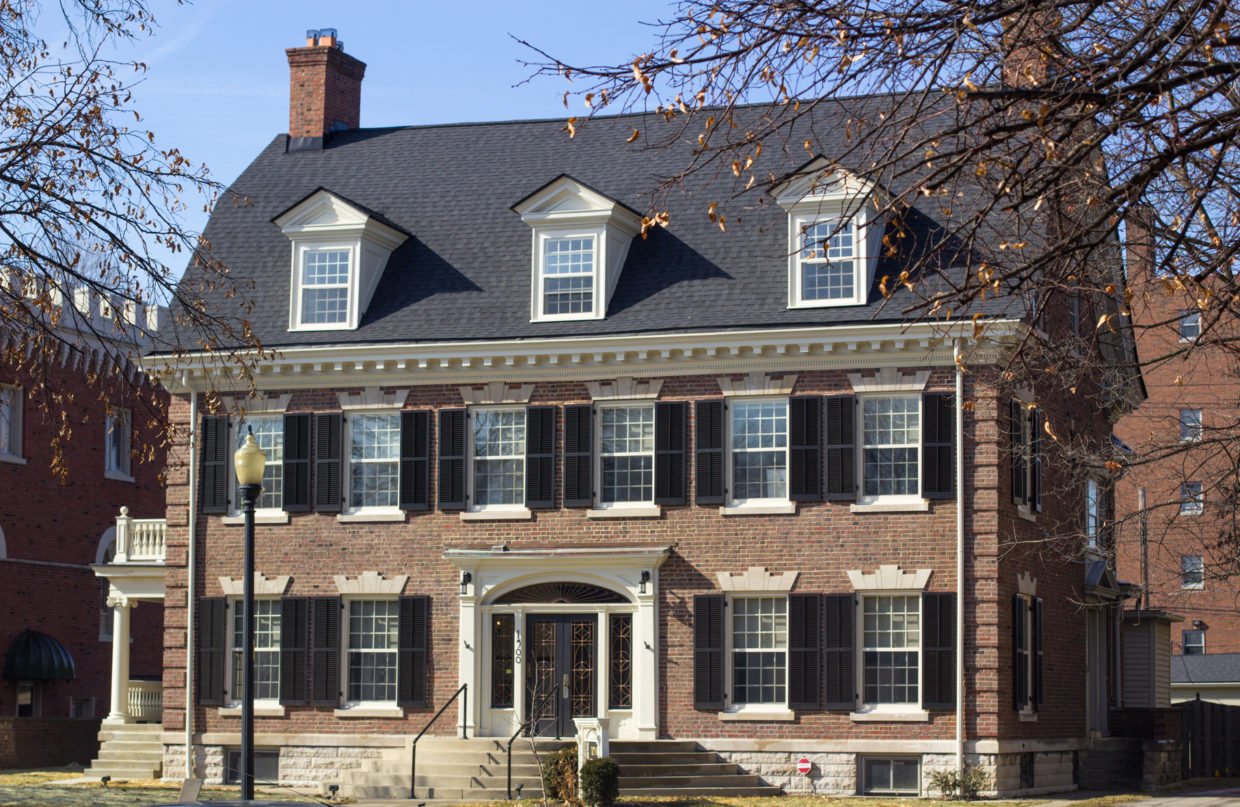
Designed by local architect Herbert Foltz, the Nicholsons’ house made an immediate impression, and in the years since it has continued to draw attention for its beauty and style. In a 1920 House Beautiful article, architect Anton Scherrer (whose father designed the Indiana statehouse) called it one of the three best houses in the city, noting that “its lines are calm, and its general tone is dignified and serene. Formal as it is, it has an air of graciousness. I never pass it but I am grateful for the well-disciplined battalion of its second-story windows.” More recently, architectural historian James Glass named it one of the best examples of Georgian Revival architecture in the state of Indiana.
Nicholson wrote his best-selling book The House of a Thousand Candles in the third-floor study, and today the house has taken on the book’s title as a moniker.
The Nicholsons sold the house in late 1920 to the family of Carl A. Taylor, who used it as a private residence. Then in the early 1930s Mary Keller purchased it and christened it Meredith Manor. For the next few decades she operated it as a boarding/apartment house, and for several years her son-in-law also operated a medical office from the site. Indiana Landmarks, a statewide preservation organization, bought the deteriorating house in 1978, extensively rehabilitated the exterior, and sold it to Bob Beckmann, a well-known figure in Indianapolis’s civic and arts communities. Beckmann restored the interior and lived in the house for nearly seven years before selling it to Indiana Humanities in late 1985. Indiana Humanities moved into the Nicholson House in January 1986.
From our home today, Indiana Humanities develops and implements award-winning programs with the goal of encouraging Hoosiers to think, read and talk. At 10,000 square feet, the house also offers office space for tenants and meeting rooms for the public, which enhances its role as a vital community center.
Meredith Nicholson, 1866–1947
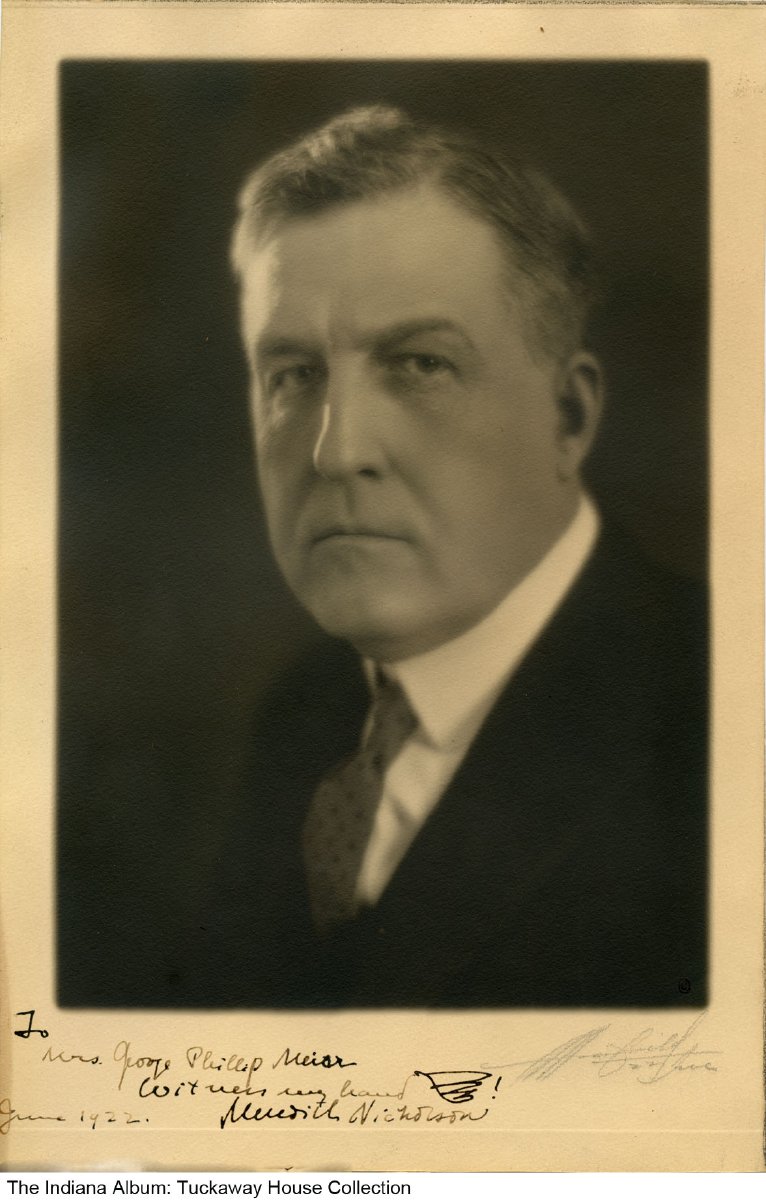
It’s fitting that Meredith Nicholson’s former home serves as a center for public humanities in Indiana. Meredith, who gained national prominence as an author in the first three decades of the 20th century, was fiercely proud of the Hoosier State. Many of his novels were set in Indiana, and he advocated for the state in books, essays, and speeches.
Meredith was born in Crawfordsville, Indiana, on Dec. 9, 1866, and moved at age five to Indianapolis. Struggles with math led him to drop out of high school in his first year, but his passion for reading and learning opened other doors. He eventually took up a writing career, working for the Indianapolis Sentinel and the Indianapolis News. Meredith released his first book, a collection of poems, in 1891, but his real break came in 1900 when he was asked to write The Hoosiers, a cultural history of Indiana, as part of a book series highlighting the American states. He was living in Denver at the time, but with publication of The Hoosiers (and with his wife Eugenie’s family money backing him up), he decided to return to Indiana and take up writing full time.
For nearly three decades Meredith produced a book a year on average, and he had a number of best-selling novels early in his career. His runaway success was The House of a Thousand Candles, published in late 1905; it sold more than 250,000 copies, was translated into several languages, and was adapted for both stage and screen. Essays and book excerpts in popular magazines such as Collier’s, Cosmopolitan, and The Saturday Evening Post also earned Meredith a wide readership.
By the late 1920s, however, Meredith’s popularity had faded, and with the onset of the Great Depression and his wife Eugenie’s death in 1931, he essentially gave up writing. A lifelong Democrat, he undertook a new career in 1933 when President Franklin Roosevelt appointed him American minister to Paraguay. He continued serving as a diplomat (with additional assignments in Venezuela and Nicaragua) for eight years, until he resigned in 1941. After a short stay in Florida, he lived out the remaining years of his life in his beloved Indiana, briefly serving as a columnist for the Indianapolis Star. He died on Dec. 21, 1947, and is buried in Crown Hill Cemetery.
Eugenie Kountze Nicholson, 1867–1931
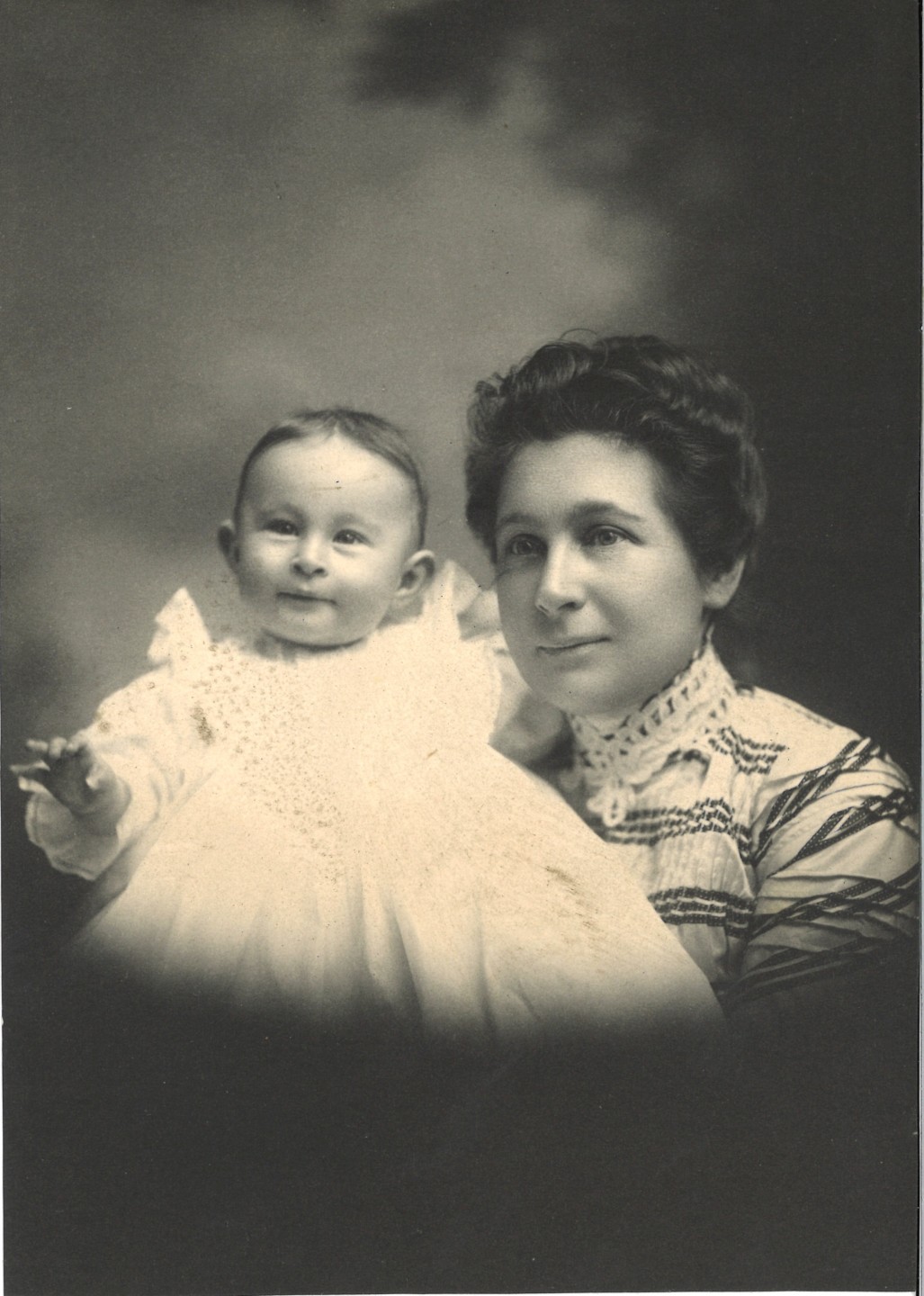
Eugenie Kountze Nicholson, wife of Indiana author Meredith Nicholson, was born in Omaha, Nebraska, on July 11, 1867, to Herman and Elizabeth Davis Kountze. Her family was prosperous; her father founded banks in New York, Omaha, and Denver. During part of her teenage years, Eugenie lived with her grandparents in Indianapolis, where her grandfather Thomas Davis had established the Sinker-Davis Company, and studied at the Kappes School.
Eugenie attended the prestigious all-female Vassar College (class of 1888), where she was an honors student and member of Phi Beta Kappa. While visiting Vassar friends in Indianapolis in the early 1890s, she met Meredith, who was working as a newspaperman and known to be one of the city’s most eligible bachelors. The two hit it off and married on June 16, 1896.
Eugenie was key to her husband’s success. As a young father, Meredith pursued an unfulfilling business career in Denver, but Eugenie helped persuade him to give it up, move back to Indianapolis, and follow his true passion for writing. Eugenie’s family money also allowed him to take up this initially less-lucrative work. As Meredith’s career progressed, Eugenie provided him with insights and ideas, and anecdotal evidence suggests that she played a significant part in reviewing and editing his best-selling works.
In addition to being a supportive wife, Eugenie was brilliant and accomplished in her own right. She became increasingly involved in women’s suffrage in the 1910s, serving as vice president of the Woman’s Franchise League of Indiana from 1912 to 1915. She also belonged to civic groups such as the Indianapolis Woman’s Club, the Contemporary Club, the Progressive Club, the Indianapolis Public Health Association, and the Art Association of Indianapolis. After the United States entered World War I in 1917, war work became the focus of Eugenie’s attention. She led the Red Cross’s Surgical Dressing Division in 1917 and the canteen at Indianapolis’s Union Station in 1918–19.
Eugenie’s strenuous war service impacted her health, and in the 1920s she took leave from her civic engagements. She died in Indianapolis on Dec. 20, 1931, and is buried in Crown Hill Cemetery.
This biography of Eugenie Kountze Nicholson is adapted from a blog post that Indiana Humanities intern Leeah Mahon wrote for the Indiana women’s suffrage centennial celebration in 2020.